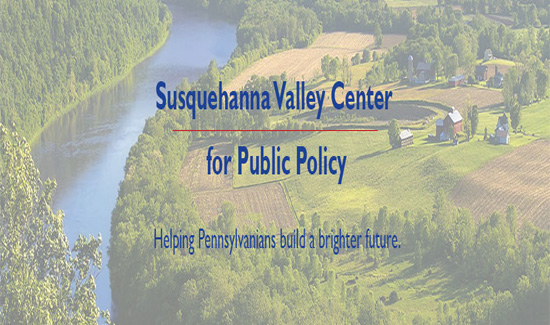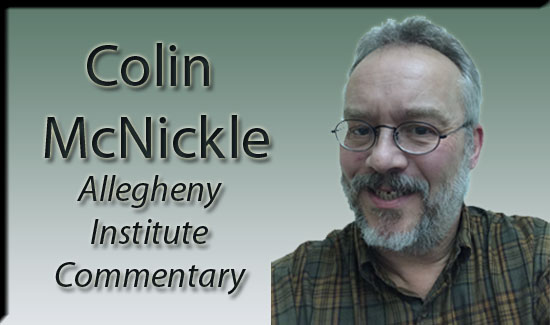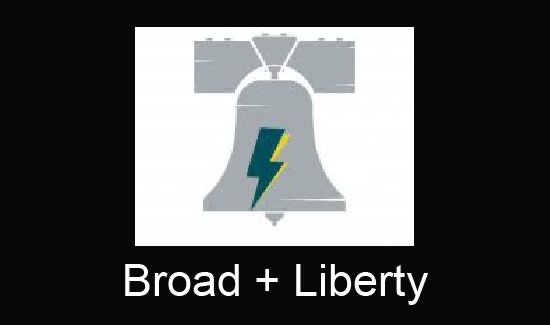Don’t Know Much About History?

In 1960, a popular Sam Cooke song began with the lyric: “Don’t know much about history…”
Sadly, nearly sixty years later, that could be our alternative national anthem. Successive studies show yawning deficiencies in history and civics knowledge across age classes, but especially among younger people. The problem has many parts. Manifold choices of entertainment competing for attention. Special effects substituting for the imagination of the mind. Widespread public disillusionment with politics, politicians, and government. Arrogant belief the past was inferior and irrelevant. A declining emphasis on civics education. The sum of these factors is this: If students are not being schooled in the fundamentals of citizenship, it becomes harder to pull them in as adults.
In 2019, we resolve to remind Pennsylvanians our commonwealth is rich in history and rich in people and institutions depicting and interpreting this history.
As Charles Dickens put it, this is the best of times and the worst of times. The best of times includes enthusiastic and visionary leadership at museums large and small, and the constant research, writing, and reevaluating being done by a new generation of scholars. The worst of times includes the disheartening example of the president, who habitually derides and mangles historical fact and peddles fake history.
When Oliver Hazard Perry set sail on Lake Erie to score an upset victory over a British fleet in 1813, his battle flag carried immortal words: “Don’t Give Up The Ship.” (Teaser: There is reportedly a two-hour documentary on Commodore Perry well into production) The Susquehanna Valley Center for Public Policy is not about to give up the ship on promoting history knowledge and education.
True to the spirit of the recent holiday season, we express gratitude to those keeping the candles of history burning brightly, and devising ways to make it attractive and alluring to our citizens.
Through wondrous technology, history is more visible and more accessible. Perhaps the best example of this is a website – ExplorePAhistory.com – developed through a partnership between public media WITF and state government. The hundreds of historical markers alongside our roads are the jumping off point for a journey through history, a one thing leads to another trip of connected learning. This is a trustworthy and informative source for serious students of history and casually curious people.
A wealth of museums has come into being. The Heinz History Center in Pittsburgh. The Visitors Center and Museum of Gettysburg. The Museum of the American Revolution in Philadelphia. The National Civil War Museum in Harrisburg. Lancaster History, connected to James Buchanan’s Wheatland. The Seminary Ridge Museum in Gettysburg. This is by no means an exhaustive list. These are highlights among places I have visited multiple times.
Smaller historical societies are putting on fresh exhibits using media and artifacts to remind of people and places contributing to the Pennsylvania story.
Historic landmarks have undergone remarkable rejuvenation, as anyone who has visited the magnificent Bedford Springs Hotel and Resort can attest.
The Civil War Trust has acquired significant parcels of land at Gettysburg, and the Gettysburg Foundation pitches in on restoration and exposition efforts. The CWT has expanded into the Revolutionary War and the War of 1812, and is actively acquiring property to help tell the story of a pivotal clash few people realize the enormous significance of, the Battle of Brandywine. Acquisition for preservation is not their sole purpose. On the education front, these groups offer incredibly instructive and involving programs for history teachers and students.
An encouraging trend is how local historians are unearthing and amplifying the role many Pennsylvania communities, structures, and individuals played in the Underground Railroad. Few records were kept of this perilous activity, but persistent scholars continue sleuthing out remarkable stories. The Pennsylvania Historical and Museum Commission is spearheading a push to add black history-related places, starting with churches and cemeteries, to the National Register.
Recently, a story in The Philadelphia Inquirer detailed the African American Documentation Project, which is assembling a digital database of cemeteries across the commonwealth where African Americans are interred. Honorable mention was also made of the Pennsylvania Hallowed Grounds Project in Beaver County, focusing on the cemeteries where black veterans are buried.
Genealogy has become a popular pursuit as people use more accessible records to trace family roots. New DNA technology is being used to discover the ancestral roots of individuals. For our illustrious state, the key is to revive interest in our roots as citizens.
As the surveys say, state government is not held in high public regard. This unfortunately tends to obscure the invaluable and intrepid work of the Pennsylvania Historical and Museum Commission and the PA Heritage Society. The sites that are part of the PA Trail of History – battlefields, historic homes, industrial heritage, farm and village – combine interesting stories and varied points of reference. Kudos also go to the local groups who stepped in to run several sites when state funding shriveled years ago. On their brochure, PHMC observes that “In Pennsylvania, all roads lead to history.” No hype there. Hit the highways and byways of the Commonwealth and find this truth.
Museums, libraries, schools, roundtables, civic groups, churches and others increasingly provide venues for scholars and authors to share new insights and perspectives on stories familiar and little known. Many of these current works augment or stand beside the classics.
In addition to banging the drum on the subject of history, we at the Susquehanna Valley Center are following our own advice by producing documentaries under the heading of Rediscovering Pennsylvania’s Historymakers. Four documentaries can be viewed on our website at https://susvalleypolicy.org/other-media/ – Thaddeus Stevens, PA Generals at the Battle of Gettysburg, Asa Packer, and Lucretia Mott. A fifth – Zebulon Butler, Nathan Denison, and the Battle of Wyoming – will be released early this year. While notable leaders are the focal point, our documentaries showcase fascinating places such as the Asa Packer Mansion and St. Mark’s Episcopal Church in Jim Thorpe. There are dozens of comparably interesting subjects we would like to explore. The difficulty, no surprise to history buffs, is raising underwriting dollars.
Securing funding for history is always a struggle. With so many vociferous advocates of priority causes – education, health care, human services, environmental protection, transportation – competing for state dollars, it is not surprising that history usually rides in a compartment on the caboose of the funding train. When hard times hit, budget-cutters tend to see history as an ornament rather than a necessity.
Why does history matter? Understanding history with all its complexities and complications helps inform our national and state discourse and attitudes. Whenever someone asserts that America was founded as a Christian nation, it is helpful to remember that the Revolution could not have succeeded without the financial acumen and dexterity of a Polish-born Jew – Haym Salomon. Miscasting history contributes to ill-informed decision-making.
History happens year after year in every corner of our commonwealth. The more we learn, the more we appreciate and benefit from the foundations, principles, traditions, and virtues that combine to make Pennsylvania the nation’s Keystone State.
David A. Atkinson is a Research Associate with the Susquehanna Valley Center’s Edward H. Arnold Institute for Policy Studies
The views expressed here are those of the author and not necessarily those of The Susquehanna Valley Center.
Nothing contained here should be considered as an attempt to aid or hinder the passage of any legislation.




